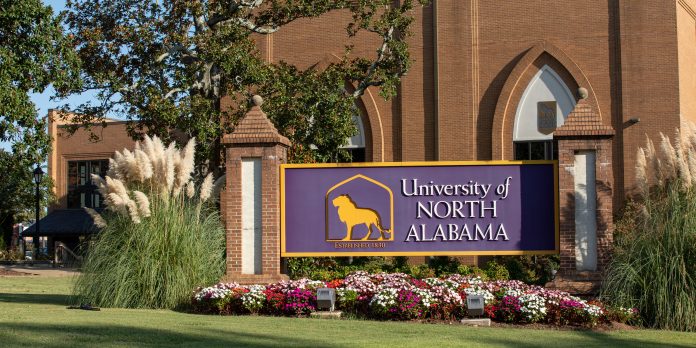FLORENCE – A team of University of North Alabama faculty is working to understand and address gaps in STEM higher education for rural, academically talented, low-income students.
The project is through a collaborative grant led by Mississippi State University. The National Science Foundation awarded them a $2 million, five-year grant to collect data and create research networks for STEM programs.
The Rural Low-Income Student Investigations Network Groups (RISING) aims to better understand barriers to higher education for rural students and improve pathways to careers in Science, Engineering, Technology, and Math – or STEM. Data already indicate that 82% of STEM workers must have at least a bachelor’s degree, while only 25% of individuals from rural areas achieve a bachelor’s degree or higher.
“To make the Scholarships in STEM, or S-STEM, program at large more successful, we need to know what is working and what is not working,” said Dr. Sara Johnson, associate professor of chemistry and a co-principal investigator on the grant along with Dr. Karly Cochran, assistant professor of psychology. “Unfortunately, faculty often lack the support systems needed to publish and share research from these projects.
“We are excited to do the work of creating infrastructure to support the scholarship of our STEM colleagues at rural-serving institutions with S-STEM programs.”
The networks will be comprised of educators across the United States who have NSF Scholarships in STEM projects. S-STEM projects are awarded to target the recruitment and retention of academically talented, low-income students to post-secondary education in STEM fields. Johnson directs one such S-STEM program at UNA, which is geared toward high-achieving rural students in Alabama.
Recruitment for the groups will begin soon through conferences for the NSF S-STEM community. The final groups will develop research questions on which data to college from their S-STEM projects. The RISING leadership team will provide support and guidance for each group as they work to answer those questions. Finally, the networks will share information with each other and beyond.
Johnson said she sees this project as the starting point for a cascading effect that will improve recruitment, retention, and overall outcomes for rural, academically talented, low-income STEM students.
“We have specialists in rural education, higher education, student success, and various STEM fields – all at rural-serving institutions,” she said. “We are excited to be working with such a diverse team to impact our rural colleges, workforce, and communities.”
Don’t miss out! Subscribe to our email newsletter to have all our smart stories delivered to your inbox.



